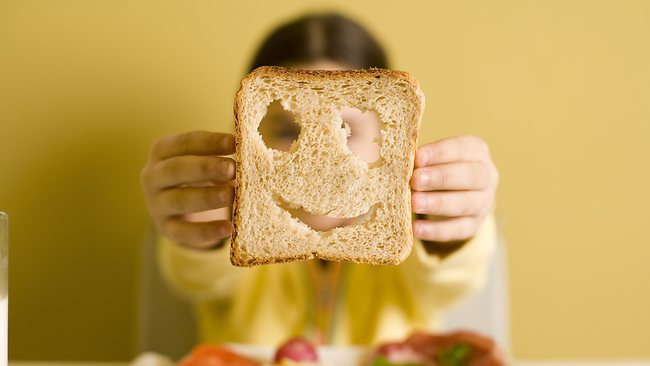What's the best bread for your family?
THE number of bread choices we have is enough to make your head ache, so we've simplified it for you.

REMEMBER the good old days, when you ate brown bread if you wanted to be healthy or white bread if you didn't care?
Now the number of bread choices is enough to make your head ache - and we're just talking about what's available at the supermarket, not fancy artisan bakeries.
For a start, that white bread is now made with all sorts of added goodies, including vitamins, minerals and fibre enough fibre, the blurb on the bag says, to overtake a gnarly multigrain loaf.
Then there is wholemeal, multigrain and rye, "birdseed" breads with soy and linseed, quinoa and flaxseed or pumpkin seeds, as well as trendy supplements such as folate and omega 3.
So how do you work out what is best for your family?
Senior research scientist, nutritionist and author of the best-selling CSIRO Total Wellbeing Diet Dr Manny Noakes offers three good starting points. "Start by finding the grainiest bread you can," she says.
She then recommends looking for bread with a low glycaemic index level, often promoted on the packaging.
And avoid bread with large or thick slices. "Slices of bread are getting bigger and bigger," she says, with the standard size increasing from 28g to 40g over the past 10 years.
-- WHITE BREAD --
MANNY acknowledges parents can find it challenging to get children to eat healthier foods, including grain or wholemeal bread.
She says the white breads made with added fibre "are a pretty good option", but still don't have the nutritional benefit of a grain bread. She suggests parents keep trying to introduce a healthier option.
She says cheaper white bread can be made more nutritious with sandwich fillings including salads and protein, or by topping with avocado, peanut butter or yeast spreads such as Vegemite.
-- RYE BREAD --
BREAD made with rye rather than wheat has lower GI and, if made with sourdough, tends to be chewier and more satisfying.
-- WHOLEMEAL V MULTIGRAIN
"I WOULD more likely choose a multigrain bread than a homogenous wholemeal bread," Manny says.
"The whole grain does contain all the nutrients. While you might not digest everything in the small intestine, some of the components go to the large intestine, where they are fermented by bacteria. That's a good thing. If you grind up the grains, you are more likely to fully digest them in the small intestine."
-- SOY AND LINSEED, FLAXSEED --
THESE breads are a good way of incorporating seeds into the diet that are good for the cardiovascular system, Manny says.

 Make your own Country Seeded Loaf
Make your own Country Seeded Loaf

